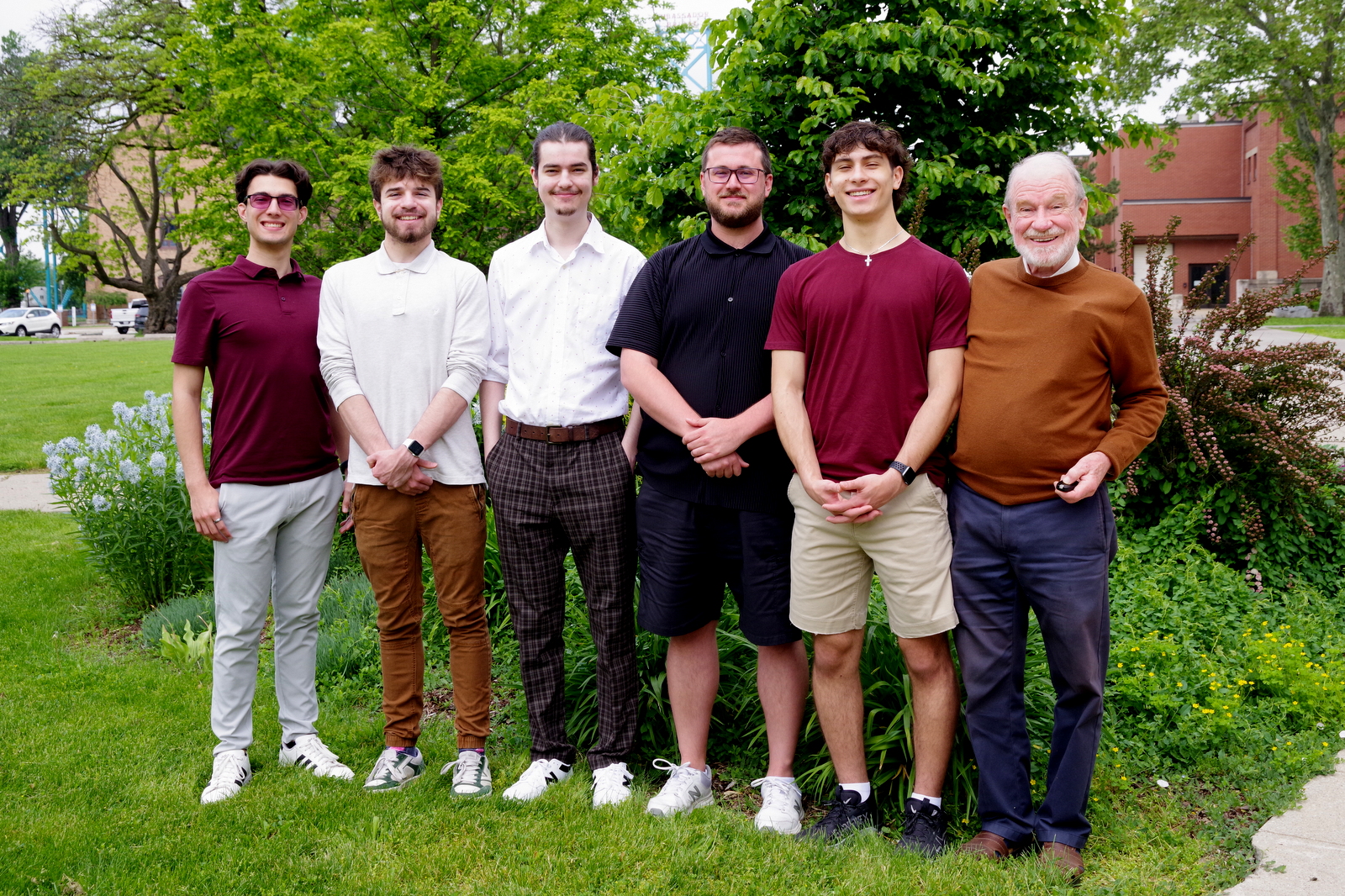Dr. Gordon Drake's Research Group
University of Windsor - Canada
About Us
Dr. G.W.F. Drake's research group is a team of graduate students, undergraduate students and postdoctoral fellows based at the University of Windsor in Canada's southern-most border city.
We develop new tools to probe the properties of atoms and nuclei by combining the high precision theoretical techniques developed in-house with the high precision measurements made possible by the modern methods of laser spectroscopy. We also work in close collaboration with Dr. Zong-Chao Yan and his colleagues at the University of New Brunswick, and Wuhan University in China.
The results calculated using techniques developed at the University of Windsor help fuel an industry of research at Argonne National Laboratory, TRIUMF, GSI (Darmstadt), and other laboratories and universities around the world.
The theoretical techniques employed include variational calculations with large correlated basis sets to solve the Schroedinger equation, and the evaluation of relativistic and quantum electrodynamic contributions to atomic processes.
Research Summary
The unifying theme of our research is the development of new measurement tools through the combined application of both high precision theory and experiment to atoms. Two examples are a significant new value for the fine structure constant, which is one of the fundamental constants of nature, and table-top measurements of the size of the atomic nucleus. Recent successes at Argonne (U.S.), GSI (Germany) and TRIUMF (Canada) have focused on the so-called neutron-rich "halo" nuclei. These exotic structures have extra planetary neutrons surrounding a tightly bound core of neutrons and protons. The significance of the results is that they enable one to distinguish amongst the various theoretical models proposed for the effective forces holding the nucleus together. By studying structures that fall apart easily, we learn about the forces holding them together. A fascinating new project for the future involves a search for new physics beyond the standard model of elementary particles, as revealed by angular correlations following beta decay of the halo nucleus.
Two recent advances have made these initiatives possible. First, our work has yielded unprecedented levels of accuracy in calculating the properties of atoms from first principles. Some of this requires the high performance computing facilities of SHARCNET, together with fundamental advances in methods to calculate essential corrections due to relativity and quantum electrodynamics. I have formed an international collaboration of other researchers in Canada and China to carry out this work, with the help of dedicated resources from SHARCNET.
Second, we work in close collaboration with the top experimental groups at particle accelerators around the world to exploit the techniques of modern laser resonance spectroscopy to perform measurements of exquisite accuracy and sensitivity. The ability to trap and study just a single atom plays a key role. A long sequence of joint papers published in Physical Review Letters has resulted from these collaborations. Our theoretical results dominate the literature in this area, and they are providing the motivation for experimental groups to advance the state-of-the-art for high precision laser metrology. Measurements of the nuclear charge radius are now available all the way from helium-3 to helium-8, lithium-6 to lithium-11, and beryllium-8 to beryllium-12.
